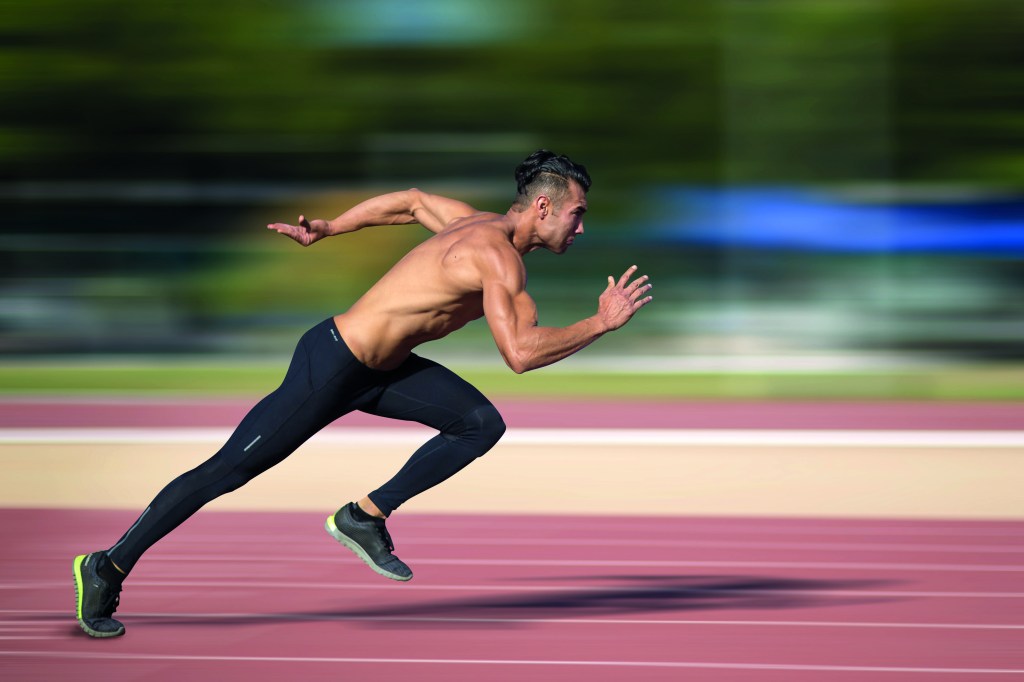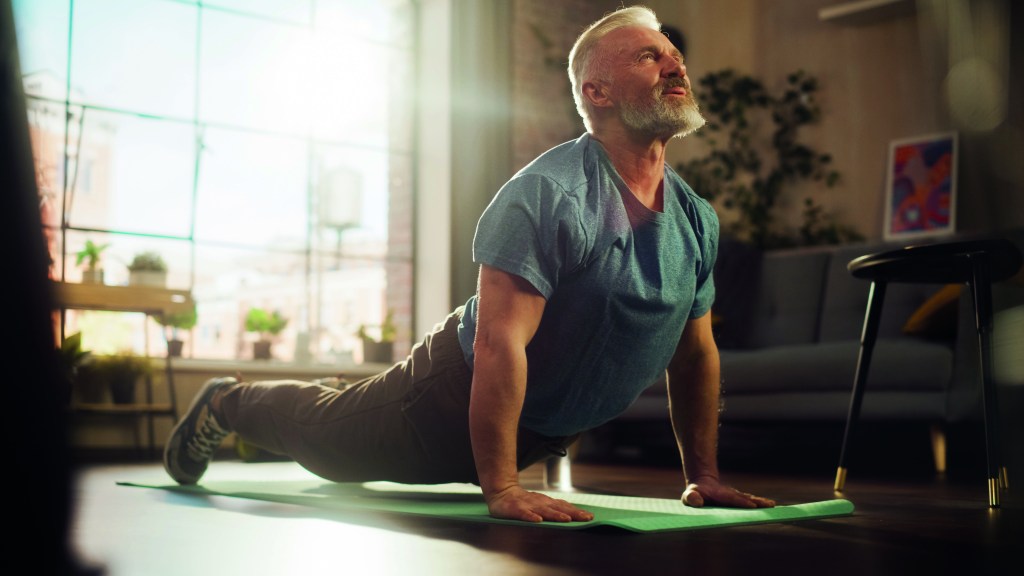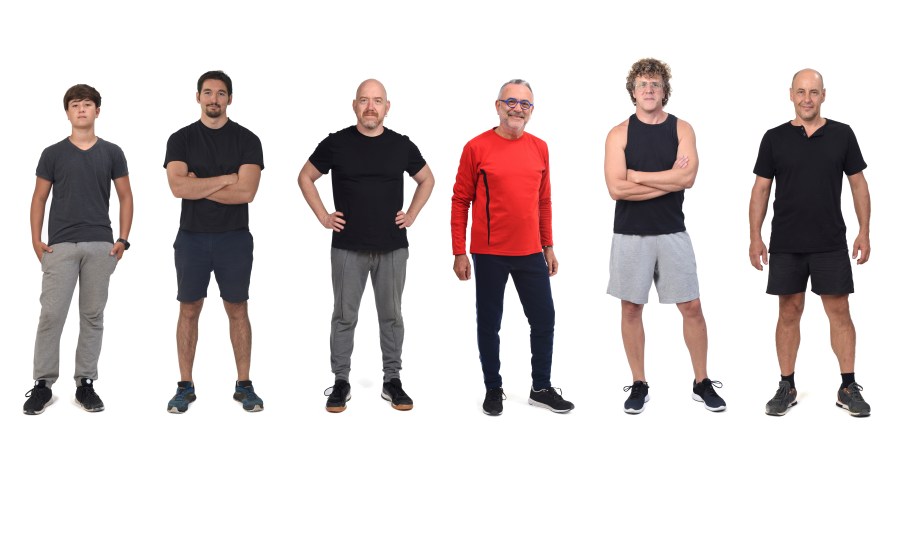Your guide to continuing to achieve health, performance and aesthetic goals – and hit peak fitness at any age
As a MF reader, you won’t need convincing that regularly working out delivers a host of benefits, both physical and mental, whatever your age. What’s not so well known, however, is that recent longevity research has revealed that sticking to strength training well into your twilight years has the potential to help you hit peak fitness at any age – and even defy the ageing process.
FAST-TWITCH TWENTIES
The hormones responsible for stimulating muscle growth are at their highest in your twenties, so this is the time to lay down as much muscle tissue as possible before the previously mentioned decline begins – usually from age 30 onwards. For best results, mix it up, using hypertrophy methods such as drop sets, eccentric repetitions (negatives) and maybe even some ‘sarcoplasmic stimulation training’ (more on that below).
Your working heart rate is at its maximum, so cardio sessions should be seriously challenging, with sprint interval formats such as Tabata and other ‘eyeballs out’ protocols on the menu. It’s worth noting, your body is at its most resilient now and your recovery is as speedy as it’ll ever be, so you can handle a high work load – although one rest or active recovery day is recommended.
You’re also at your most flexible in your twenties, but don’t be lured into a false sense of security. Build dynamic and static stretching into your routine now, or pay a stiff price down the line.

FUNCTIONAL THIRTIES
This is where age-related declines can begin to manifest, so the crucial goal here is to develop permanent habits – take time to hack consistency. Experiment with different workout modes, different locations, different training buddies and different periods of day to find what floats your boat and is realistically going to be a regime you’ll commit to.
Incorporate metabolic resistance training to maintain muscle gains, but also to keep your calorie-burning furnace on full blast and ward off weight gain due to slower metabolism associated with hormone change. Now’s also the time start to include more functional movements rather than bodypart-split training – your older self will thank you for this later. Think Turkish get-ups, single-leg Romanian deadlifts and devil’s press.
Continue to incorporate fast-paced cardio sessions, but ease back from bouts of 100% effort in favour of higher volume – mixed-pace fartlek being an effective option to add variety and fun to your sweaty endeavours.

FINE-TUNING FORTIES
Joints might begin to show signs of creaking (often audibly!) particularly for the weekend warriors who have spent a significant proportion of their leisure time on the pitch, court or track chasing sporting glory.
Fortunately, you can still ramp up muscle without smashing your joints by adopting ‘blood-flow restriction training’. This method enables you to take your muscles to some dark places but with lighter loads than you’d normally employ.
Your target working heart rate declines, so it’s important to lower the intensity, but increase the duration of your cardio workouts to burn fat using steady-state aerobic exercise. Again thinking about protecting your joints from further wear and tear, opt for lower impact endurance work, maybe switching from pounding the pavements to cycling, swimming or rowing.
Double your money by favouring the outdoor version of whatever it is you choose, due to the eco-sensory mood boost it will bring.
Years of paying your dues in the gym, combined with occupational physical stress – be that manual labour or being confined to a desk – can play havoc with your posture, so put your focus on core training, maybe even taking up Pilates.
THRIFTY FIFTIES
Muscle maintenance becomes the objective here, as maintaining what you’ve got will help to keep your metabolism up and restrict body fat storage. However, your body needs more time to refuel, rebuild and recover between workouts, so a good tactic is to switch from split routines to total-body workouts, allowing for more rest or active recovery days.
An effective way to do this is using a peripheral heart action (PHA) circuit, whereby exercises are alternated between upper body and legs. This leads to a greater calorie burn, due to ‘vascular shunt’, whereby your cardiovascular system has to keep pushing the oxygen-carrying blood from one place to another.
Your ideal cardio plan should be HIIT (high-intensity interval training) and MISS (moderate-intensity steady-state cardio), as the occasional high-intensity session won’t hurt, but your go-to should be moderate intensity using your weapon of choice – be it hiking boots, the steel horse or a punch bag.
If not already on your regular to-do list, yoga is essential for mobility. It also carries the added bonus of relaxation. Your fifties can place you under considerable family stress – particularly if you have elderly parents to look after – so the wellbeing benefits will help to keep your mental health in check.

REWARDING SIXTIES
This is when you can allow yourself to take the pressure off, switching your emphasis from workouts and aesthetics to activity and quality of life. Social contact is an essential ingredient for good mental health, so golf, tennis and hiking are all worth the time, particularly as they also bring cardio benefits. And learning a new hobby can help to develop new neural pathways in the brain, keeping you mentally sharp.
However, it’s not time to cancel your gym membership. Twice-weekly high-rep, low-load, total-body strength sessions will keep you ticking over and ensure you get the most out of your sporting pursuits.
There’s really no point trying to perfect the peak on your biceps with preacher curls; your focus should be on compound exercises to guarantee you can continue to swing around the grandchildren, a garden spade or your other half on the dance floor, so pick wood chops, thrusters and walking lunges.
Rather than hit the hurt locker, you should now rein back a little, training to fatigue rather than to failure. Although it applies at any age, the maxim ‘listen to your body’ carries extra gravitas now, so if you need an extra rest day, take it – you’ve earned it.
Understanding the – somewhat depressing, but thankfully manageable – changes that happen to your body as it gets older
AGEING PROCESS
- Decreasing levels of growth hormone and testosterone lead to a reduction in muscle mass and, as a direct result, less strength. Also, of the two muscle fibre types, you tend to lose more of the fast twitch than slow, so speed of contraction suffers.
- Lungs become less elastic and the number of air sacks decreases, so there is a reduction in the amount of oxygen you can extract from the air you breathe, diminishing the maximum effort you can generate.
- Bones lose their capacity for absorbing and storing calcium, so become weaker and more prone to fracture. The cartilage that covers the ends, providing smooth gliding of the joints, wears down and the ligaments that hold bones together become less elastic, so range of movement reduces.
- Blood vessels become stiffer, so the heart refills more slowly, reducing cardiac output and therefore the ability to perform at elite intensity levels.







